What types of radiators are used in an apartment or private
It always happens when the heating season comes to an end, we want to have new radiators in the room next, because the old ones do not heat at all. In fact, such work of heaters can be not only because of their breakdown, but also due to blockage. If you are determined to upgrade the equipment, you will be interested to know what types of radiators exist. We will help to understand them in more detail, so that when choosing you have no questions.

Classification
Heating radiators are divided into two main types. Consider in more detail those that can be used in the house:
| Water |
|
| Electric |
|
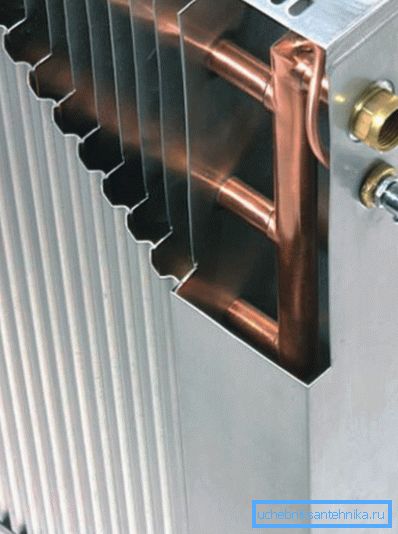
Tip: it is convenient to use the electric convectors of heating in country houses, which are visited from time to time.
Below you will find out what types of heating radiators are divided by heat output. This parameter is influenced not only by the temperature of the coolant, but also by the design of the heater.
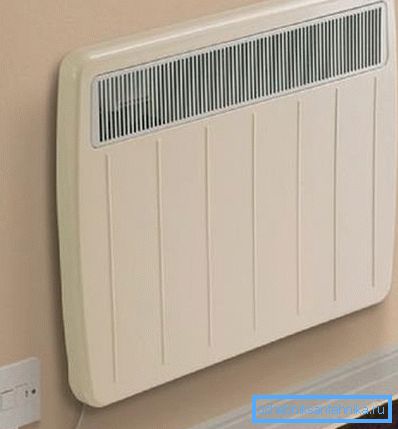
Sectional
The most common products.
They can be made from:
- cast iron;
- aluminum;
- combinations of metals, for example, steel and aluminum. Such heaters are called bimetallic.
Such a radiator is assembled from sections. Example, cast iron battery in the apartment. The number of sections affects the heat transfer device. Appeared on the market aluminum models are also prefabricated.
They are not only more aesthetic in appearance, lighter, but their section is 2 times more powerful than cast iron.
Cast iron
Such heating batteries appeared more than 100 years ago, but still they are popular among consumers due to their low cost and low heat inertia.
- The design can be used not only in water heating systems, but also steam, as it can withstand temperatures up to 130? С.
- Cast iron is able to give off heat for a long time after heating. Therefore, they were universally used in the houses of the old building, where even in the event of a heating shutdown for a short time, the room did not have time to cool down.
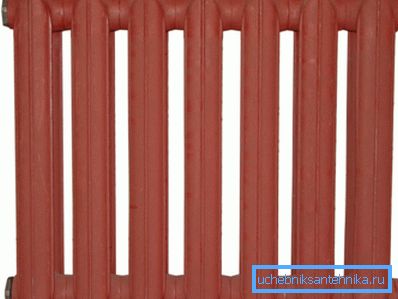
- The radiator requires much more time to heat up to the desired temperature, which in the present realities is associated with unnecessary energy losses.. At the moment, in new homes they are used quite rarely.
- Manufacturers have changed the appearance of the device, making them more modern, but this did not change its technical characteristics radically. As before, one standard section is designed for 1-1.2 m2 rooms

Aluminum
Appeared as a real alternative to cast iron radiators.
- The equipment is significantly lighter in weight, the battery of 10 sections can easily be lifted to any floor with your own hands, without an assistant.
- The heat capacity of the radiator is inferior to the iron. But on the other hand, they quickly heat to the desired temperature and release heat about 2 times more powerful.
- They have an aesthetic and neat appearance that gives them a great fit into a modern interior.
- Fuel consumption is seriously saved due to the rapid heating of the section.
- Self-installation is not difficult, due to the small weight of the heater.
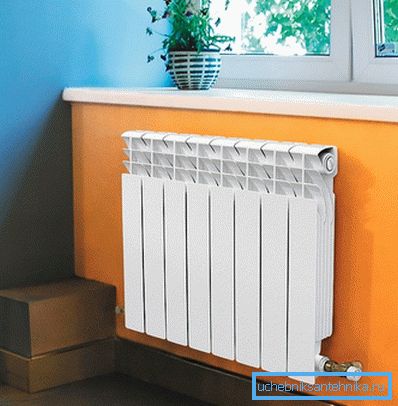
Bimetallic
The appearance of the device resembles the previous version. They differ structurally - outside the radiator is aluminum, inside - stainless steel, which are soldered to each other.
This makes it possible to significantly increase their strength. In addition, the thermal conductivity of these batteries is higher than that of aluminum.
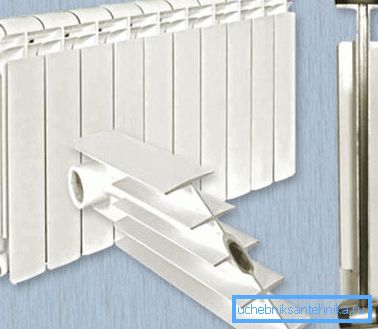
It should also be noted that these heaters are not so whimsical to the quality of the coolant, so they can be installed not only in individual heating systems, but also central. Accordingly, the price of devices is higher. When calculating devices, it is usually taken into account that one section is capable of heating 1.4 m2 with a standard ceiling height.
The weight of the radiator is small and comparable to aluminum. Installation instructions are also no different. The devices are almost identical in their performance.
Tip: The above are the parameters for the standard sections. If you purchase appliances, sections of which differ from the standard, you need to specify their power in order to properly make the heating calculation for the room.
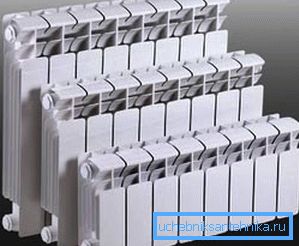
Steel panel radiators
Technical characteristics of the units are located in the middle between the cast-iron heating devices and aluminum. Steel, as is known, has good heat transfer, which is used in devices.
Their power depends on the overall dimensions, for example, at a height of 0.5 m and a length of 400 mm, it will be conditionally 634 W (depending on the manufacturer), but already at a length of 2 m - 3.2 kW. Batteries are made of steel sheets that are interconnected by stamping.
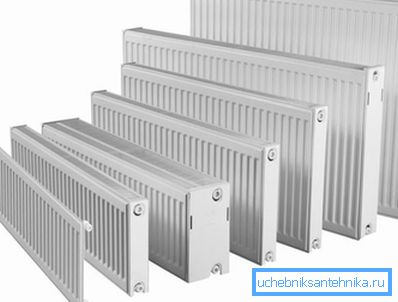
You can purchase a single-row, two-row, three-row heat exchanger. They are designed for a maximum temperature of 120 ° C.
The internal volume of the steel radiator, when compared with the iron, is almost 7 times smaller. Therefore, the system needs less coolant, respectively, and the boiler can not work at full capacity, which prolongs its operational life.
Another advantage of these radiators is that in order to reach the desired temperature in the room, water can be heated 20 ° C lower than it is necessary for cast iron ones. Thus, you can achieve real energy savings.
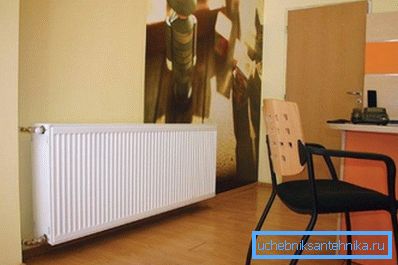
Conclusion
The types of radiators for space heating presented today fully reflect the market of this heating equipment in our country. For individual heating systems, steel panel heating devices, aluminum and bimetallic are most often used.
The apartments put cast iron and bimetallic, as they can withstand the pressure of central heating. When calculating the number of sections or the length of the radiator, you must follow the manufacturer's instructions. Video in the article will provide an opportunity to find additional information on the above topic.